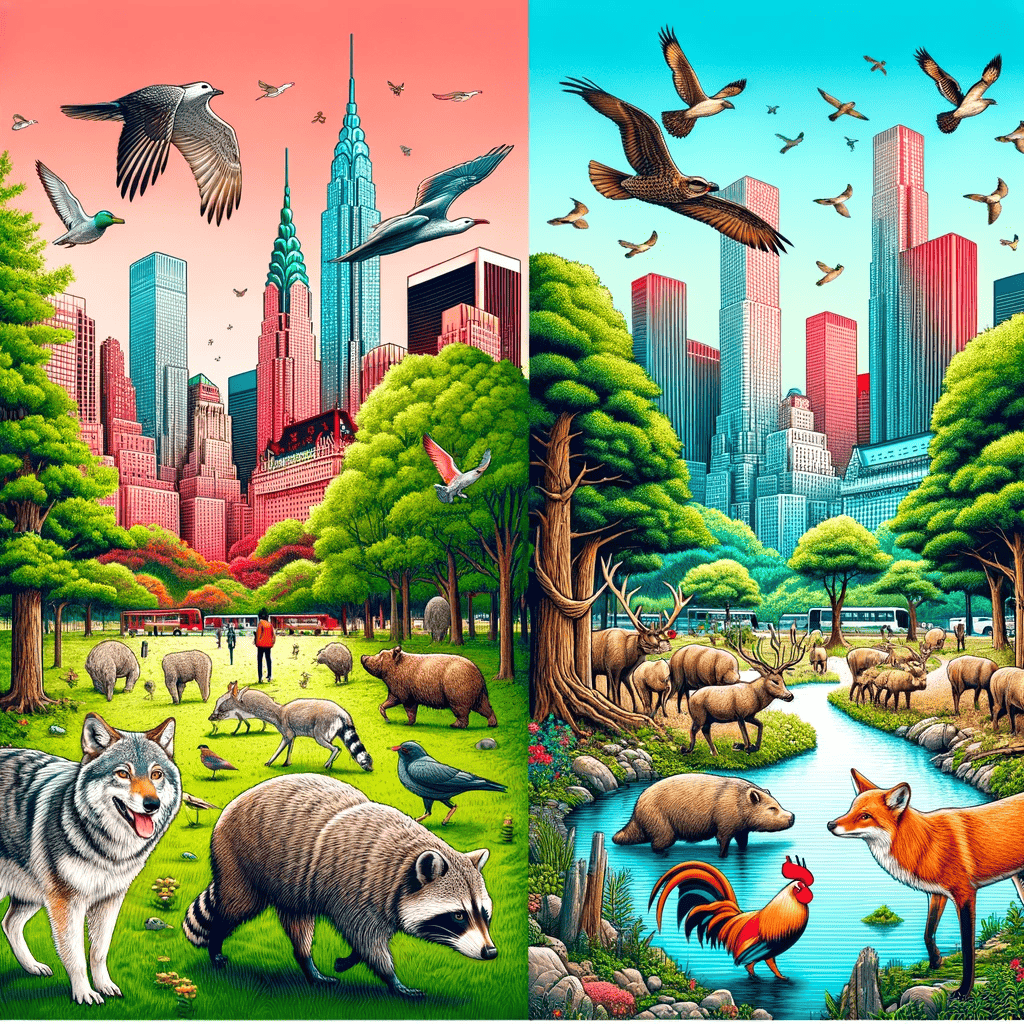Urban landscapes, often characterized as concrete jungles, seem worlds apart from the serenity of natural habitats. However, a closer look reveals a different story. Beneath the bustling streets and towering structures of the world’s busiest cities lie hidden animal kingdoms. These urban wildlife havens, thriving discreetly alongside human civilization, offer a fascinating glimpse into a different aspect of city life that is frequently overlooked.
New York City – The Urban Jungle: In the heart of New York City, Central Park stands as a verdant oasis amidst the urban sprawl. This iconic park is not just a recreational haven for city dwellers but also a habitat for a diverse array of wildlife. It’s home to numerous bird species, creating a birdwatcher’s paradise in the middle of the metropolis. Even more intriguing is the presence of raccoons and the elusive coyotes that occasionally make an appearance, defying the urban setting.
The city’s waterways add another layer to its natural diversity. The Hudson River and other estuaries are bustling ecosystems supporting various fish species. In some delightful instances, seals have been spotted frolicking in these waters, much to the surprise and delight of onlookers.
Tokyo – A Blend of Tradition and Modernity: Tokyo, a city where tradition meets modernity, also harbors hidden wildlife sanctuaries. Ueno Park, known for its cultural landmarks, is a sanctuary for birds and aquatic life. The park’s ponds and lush greenery offer a haven for these creatures amidst the urban landscape.
Beyond the city center, Tokyo’s suburbs are a testament to Japan’s rich natural heritage. These areas provide unexpected sightings of deer, boars, and the enchanting tanuki (Japanese raccoon dogs), showcasing the diverse wildlife that coexists with the city’s human population.
London – Historic Havens for Urban Fauna: Animal kingdoms in London’s, it’s historic charm is not limited to its architecture and culture. The city’s Royal Parks, like Hyde Park and Richmond Park, are renowned for their populations of deer and a wide variety of birds. These parks serve as crucial green spaces, allowing wildlife to thrive within the urban environment.
The River Thames is another hub of biodiversity. It hosts an array of wildlife, including various bird species, fish, and the famous seals of London, adding to the city’s natural allure.
Mumbai – Coexisting with Nature: Mumbai presents a unique scenario where nature and urban life intertwine seamlessly. Sanjay Gandhi National Park, a rare national park within city limits, is a refuge for leopards, deer, and a plethora of bird species. This coexistence is a remarkable example of how wildlife adapts to urban settings.
The city’s mangrove forests play a crucial role in sustaining the local ecosystem. These mangroves are vital for maintaining fish populations and supporting bird species, demonstrating the interconnectedness of urban and natural environments.
Conclusion: The hidden animal kingdoms in the world’s busiest cities are a striking symbol of nature’s resilience and adaptability. They highlight the significance of urban ecosystems and underscore the necessity for sustainable city planning that accommodates all inhabitants, both human and non-human. These wildlife havens offer city residents a unique chance to reconnect with nature, right in their own urban backyards. Exploring these areas not only enriches our understanding of urban biodiversity but also reminds us of the delicate balance that exists between our urban lives and the natural world.
Up next:
The latest in the animal kingdom
Longest Migrations in the Animal Kingdom
Exploring the Animal Kingdom in Los Angeles
Join our Forum for free today!

- The Kleptomaniac Cat That Rules Houston - July 20, 2024
- Elephant Makes a Lifelong Friend at Sanctuary in Tennessee - July 14, 2024
- Evidence For World’s Oldest Fossilized Forest Discovered in New York - July 11, 2024

